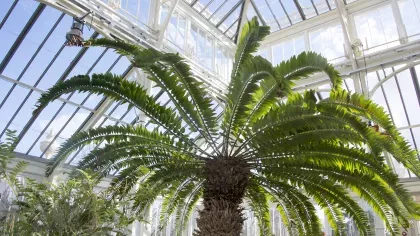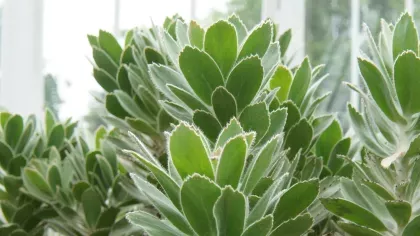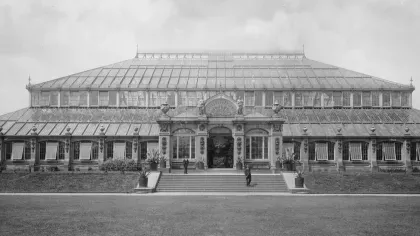25 June 2018
The plant explorers of Kew
Thanks to field science, some of the most rare and endangered plants are now protected and displayed in the Temperate House at Kew. Kew Scientist Elinor Breman explains why botanical expeditions are so important.

Protecting endangered species
New plant species are being discovered and described every year and Kew scientists are at the forefront of these expeditions.
This isn’t just an exercise in exploration.
One in five plants are threatened with extinction.
The Millennium Seed Bank Partnership (MSBP) is seeking out rare, threatened and useful plants to harvest seeds from the wild and store them. This helps prevent species going extinct and provides options for the future.
Adventurous science
Like the plant explorers 250 years ago, Kew scientists visit some of the world’s more remote regions, relying on local knowledge and facing harsh environmental conditions.
Thanks to technology, those expeditions have become easier.
We can combine satellite imagery with herbarium record data and distribution models to locate a particular species.
Vehicles can take us to places that were previously reached by foot, or horse.
Clothing, tents, food and stoves have evolved to be lighter and more weather resistant. Vaccinations and antibiotics help us deal with tropical diseases.
That’s not to say it’s risk free.
Our scientists have faced tropical diseases, torrential rains, precarious roads, unrelenting sun and more to find and conserve global plant diversity
Working together
Kew's plant explorers work with scientists and governments across the globe to better understand plant diversity with the help of local knowledge.
The Millennium Seed Bank Partnership alone has worked with partners in 95 countries.
We follow permits, quarantine processes and international conventions that help us to move plant material between countries.
Now, we are focused on building up the resources and abilities of our partners to better meet their own obligations to international agreements like the Convention on Biodiveristy and the Global Strategy for Plant Conservation.
Did you know?
Many of the plants on display in our Temperate House were grown from seeds stored in the Millennium Seed Bank vault.
Don't miss the velvet daisy bush (Olearia pannosa subsp. cardiophylla) from the Flinders Ranges in South Australia.
Visit the glasshouse to learn about this long-lived marvel and the threats it currently faces in the wild.
Exploration in the future
Exploration is not just about banking the world’s seeds.
Our Tree Gang visited the British Virgin Islands to carry out post-hurricane remedial work on the country’s trees.
In Colombia, a huge partnership between Colsciencias and Kew resulted in a ground-breaking research trip to Boyacá, a region previously unexplored due to local tensions.
We have scientists studying edible orchids in Zambia, and medicinal plants in Kyrgyzstan.
Expeditions will lead us to discover plants and fungi that could help us solve some of the world’s most pressing issues like food security and biodiversity loss.
Here at Kew, we're striving for a world where plants and fungi are understood, valued and conserved because our lives depend on them.
The adventure continues...




